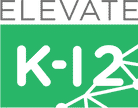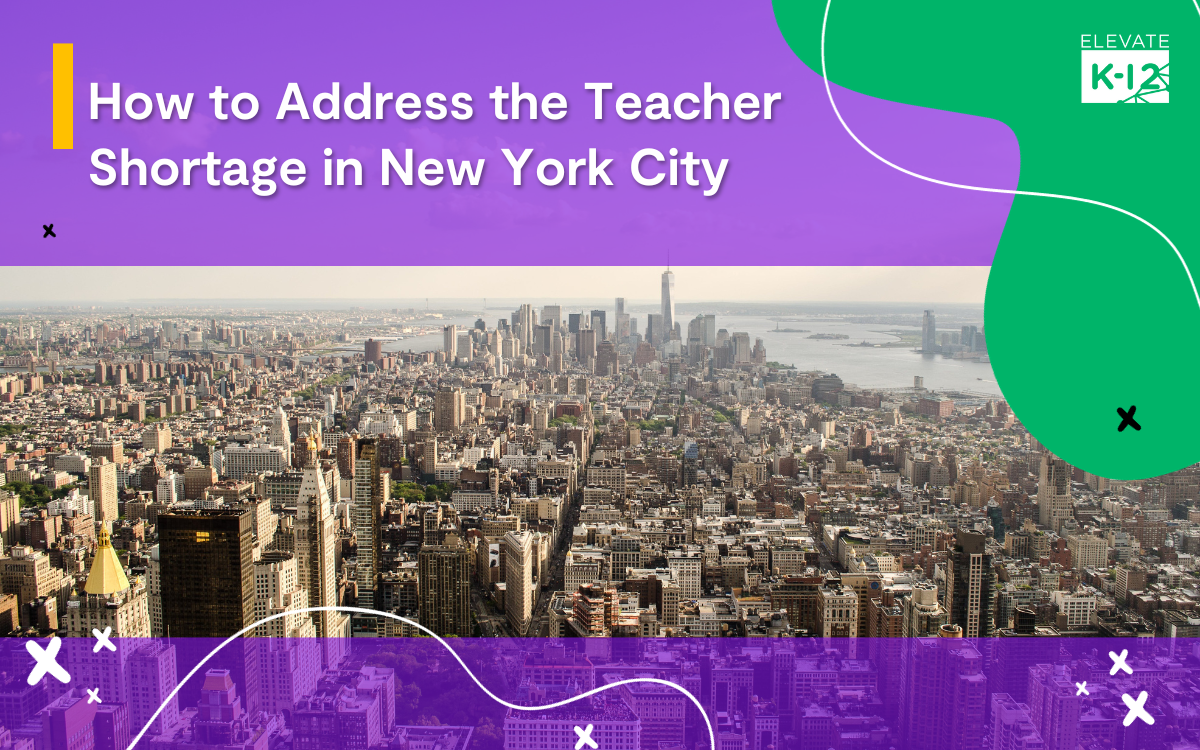New York City urgently needs more teachers, and it’s not alone — American schools have long faced teacher shortages. Teaching is complex, with 50+ hour work weeks and relatively low pay, but it can also be rewarding. We all work in education for the sake of the students.
Unfortunately, it’s the students who suffer the most from shortages. Fewer qualified teachers can lead to a drop in the quality of education, especially for students in difficult-to-staff classes.
District leaders have worked hard to manage the issue, but solutions like larger class sizes and limited course options are unsustainable. However, some school districts have found creative new ways to address their staffing issues and better support both their students and teachers.
What Does the Teacher Shortage in NYC Look Like?
In 2022, NYC public schools saw the highest attrition rates in a decade, with the total pool of teachers reducing by 2,000. NYC will need to hire an estimated 18,000 teachers over the next five years to meet class size restrictions.
While NYC is still in a better position than many areas, school systems throughout the city are feeling the impact.
Why Are Teachers Leaving the Field in New York?
During the height of the pandemic, teachers experienced more extreme anxiety compared to most other professions. Some schools in NYC have expanded mental health services, but it has not been enough to prevent teachers from leaving the profession.
Historically low pay that has not kept up with recent inflation is another factor, making it challenging for teachers to stay in their jobs and pay their bills.
What Kind of Teachers Does NYC Need?
The most significant shortages are in bilingual and special education jobs, with STEM classes not far behind.
Roles like these, which require specialized skills and sometimes additional education, are typically the most difficult to fill nationwide. There are shortages in these roles across all levels, from early childhood education to high school.
Factors Contributing to the NYC Teacher Shortage
Many factors contributing to the teacher shortage in New York are similar to what school systems face nationwide. Recent turmoil and a tough economy have contributed to high turnover, not to mention increasing retirement rates and a lack of new candidates. New York City, however, has some unique challenges at play.
Retirement and Retention Rates
The retirement rate of NYC teachers has increased by over 8% since 2018. Although the rise has slowed this school year, experts predict another wave of retirement in the near future.
Retention rates are also low across NYC. Between 2021 and 2022, 8% of city teachers left the public education system. Teachers of color are more likely to leave the profession than their white counterparts.
This troubling trend will hurt schools’ ability to develop diverse teacher workforces that are representative of their student populations.
COVID-19 Pandemic
The pandemic had a significant impact on retirement rates — many older educators retired earlier than expected to avoid exposure to COVID-19.
In addition, the pandemic significantly increased demands on teachers, especially in NYC, where the virus first took hold in the United States. Teachers had to adapt quickly and teach lessons in a new online format. When schools reopened, they had to deal with enforcing masking rules and helping students who had fallen far behind.
High Cost of Living
New York City is a famously pricey place to live, with an average monthly rent of over $3,000 for a studio. When salaries make it difficult to afford rent near the schools where they work, it forces teachers out of their school districts or into other professions.
Large and Diverse Student Population
New York City has a vast school system, with an enrollment of over one million students.
It also has a diverse population, with 14% of students learning English as a second language, 20% facing disabilities, and a high number of students from migrant families. In addition, over 74% of students come from economically disadvantaged households.
So, bilingual education and special education teachers are in high demand, and since these are some of the most challenging positions to fill, there is an ongoing shortage in those areas.
High Stakes Testing and Evaluation
New York City public schools have long relied on high-stakes testing to evaluate student progress despite controversy over the usefulness of such testing. Teachers, in addition to students, feel the pressure of these tests, which the Department of Education uses to rank schools. Test results can even determine school funding.
The high-pressure tests create anxiety for teachers and also limit how they can teach. Educators must “teach to the test” to rank well and have limited creativity and flexibility to meet student needs. This can hurt overall morale and students’ learning.
How the Teacher Shortage Affects NYC Students and Schools
Teacher shortages strain schools, creating more stress for staff and administrators. Students also have less access to teachers and fewer educational options.
Reduced Course Offerings
Teacher shortages limit schools’ ability to offer a variety of courses, as they must put all resources toward core classes. That means fewer electives, such as music and art, and less variety in STEM class options. As a result, NYC students don’t get the opportunity to explore a range of topics and open new doors to learning.
Dependence on Substitute Teachers
During a teaching shortage, schools may rely on long-term substitute teachers to cover positions they can’t fill. While substitute teachers must have some certifications, they hold fewer qualifications than full-time certified teachers. So, depending too much on substitutes may result in lower-quality instruction overall.
Larger Class Sizes
Some schools may increase class sizes if they can’t find enough qualified teachers for a particular class. While this does allow more students to take the class with a certified teacher, larger classes have numerous disadvantages.
In a bigger class, each student gets less individual attention. Students who are struggling may go unnoticed and not get the extra help they need. Plus, larger classes have more distractions and may be more challenging to manage.
Difficulty Meeting School Learning Goals
A lack of certified teachers makes it difficult for a school to meet learning goals. This is especially true with hard-to-staff areas like special ed, requiring more instructional minutes and one-on-one attention for students.
Elevate can supplement on-the-ground certified teachers with our live, virtual classes. Our certified teachers can help schools meet instructional minutes for IEPs and alleviate caseloads so teachers can offer more individual intervention. We have experienced, specialized teachers available to cover a wide range of areas, including special education.
Increased Teacher Workload
When schools are short-staffed, their existing teachers must bear the additional workload. In addition to having larger classes and more students, their responsibilities outside the classroom also increase. Teachers often feel pressure to take on more roles like department lead or school club sponsor because no one else is available.
Strategies To Help With the Teacher Shortage in NYC
With such an extensive school system and a high cost of living area, NYC schools face unique challenges. However, it’s still possible to address the teaching shortage with a combination of creative recruitment, more support for teachers, and an embrace of technology.
Focus On Recruitment and Retention
Expanding recruiting programs and doing more to retain current teachers can make a big difference. Some strategies that both attract new teachers and help retain current ones include:
- Fostering positive and supportive school environments
- Offering mentorship programs for new teachers
- Providing a breadth of teaching resources
- Increasing salaries to accommodate inflation and the high cost of living
- Offering referral incentives
- Creating a diverse and inclusive workforce
You can also expand your sights beyond your immediate area. Elevate can provide live, virtual teaching in your classrooms from vetted, certified teachers who live outside of the city or state.
Our teachers receive continuing education to stay up to date with best practices. They also have support networks, peer mentorship, and teaching resources to enable high performance.
Meet Elevate’s trained, certified teachers.
Incentives for Teachers in High-Need Areas
When staffing for high-need areas like special ed, you can provide extra incentives, such as hiring bonuses. You could also offer other forms of financial support, like a stipend for new teachers to offset their education expenses or housing, as well as bonuses for staying on for a certain number of years.
Elevate is another resource for covering shortages in high-need areas. With an average lead time of two weeks, Elevate can provide a certified teacher for a live, virtual class — even for difficult-to-staff areas like STEM. The district only needs to provide a paraprofessional teacher and laptops.
More Comprehensive Teacher Support
Teachers, especially those new to the profession, need support to manage the growing demands of working in public schools. Support systems and mentor networks, at both the school and district-wide levels, can provide teachers with the necessary resources to succeed.
Continuing education on best practices also helps teachers better meet the needs of their students, and it’s essential for teachers in specialized areas.
Technology and New Learning Approaches
Modern technology plays a new, unique role in addressing teacher shortages. Virtual, live teaching — like that offered by Elevate — puts remote, certified teachers in regular classrooms. Expanding your candidate pool to teachers who can’t commute will make filling high-need vacancies in special ed and STEM easier.
Elevate vets teachers to ensure they are qualified and certified to teach in New York State, and our curriculum meets the needs and standards of New York City schools.
See how Elevate’s live, virtual teaching can fill your school’s vacancies.
Partnerships With Teaching and Community Programs
Getting involved with teacher education programs can help you develop your pipeline of future recruits. Through partnerships, you can connect your school with eager future teachers.
You can create new initiatives to promote specialization in high-need areas, such as hosting panel discussions about special ed or STEM. You can even work with local colleges to develop learning tracks supporting teacher certification in high-need areas.
Better Salaries and Benefits
One of the most important factors to work on is better teacher pay and benefits. This alone will make a considerable difference in recruitment and retention, as teachers make almost 24% less than professionals with a similar education level.
With that big a gap in such a challenging economy, teachers will continue to leave the profession, and the number of new teachers will continue to decrease. While it’s challenging to raise salaries in the midst of budget cuts, it’s important to continue advocating for change.
Find Out More About How Elevate K-12 Can Help With the NYC Teacher Shortage
With the high cost of living, growing retirement rates, and lingering effects of the pandemic, NYC schools face numerous hurdles to solving the teacher shortages, but Elevate can help.
Elevate has already helped more than 500 districts across the United States fill vacancies with certified teachers. While in-person teaching will always be the first choice, our proven live, virtual teaching model offers immediate relief and contributes to positive student outcomes.
Learn more about how live, virtual teaching works with Elevate.

